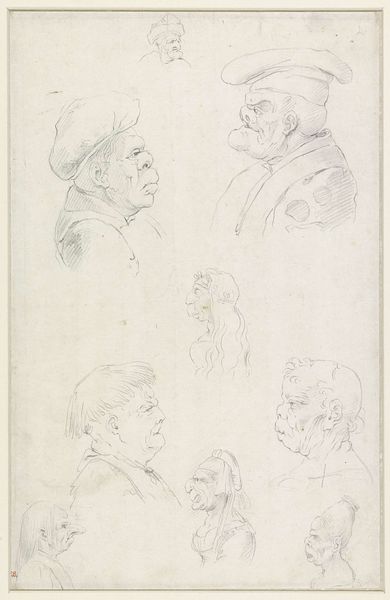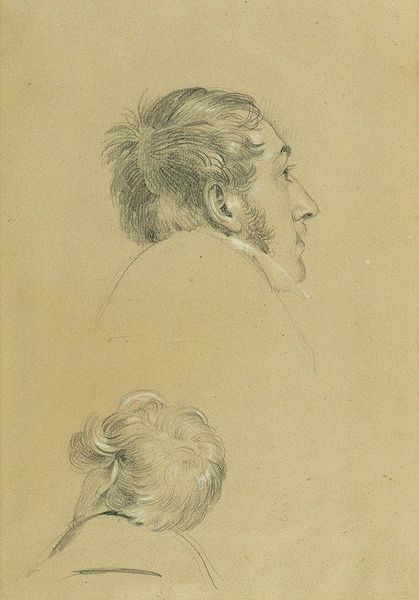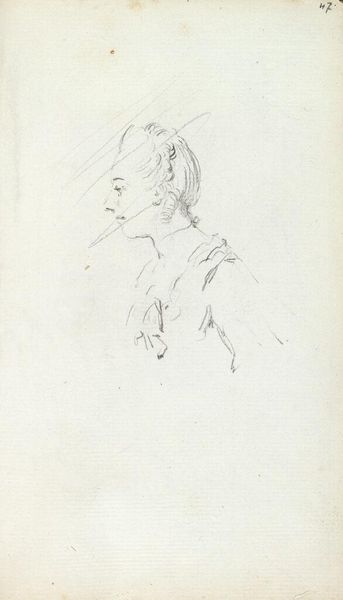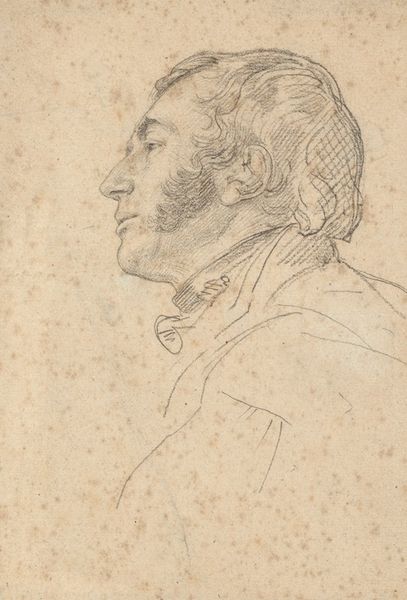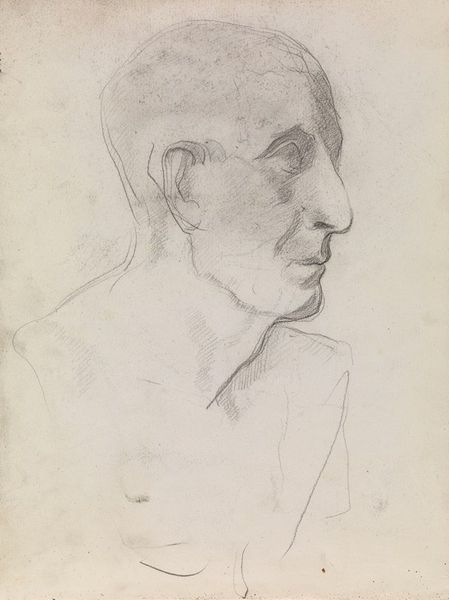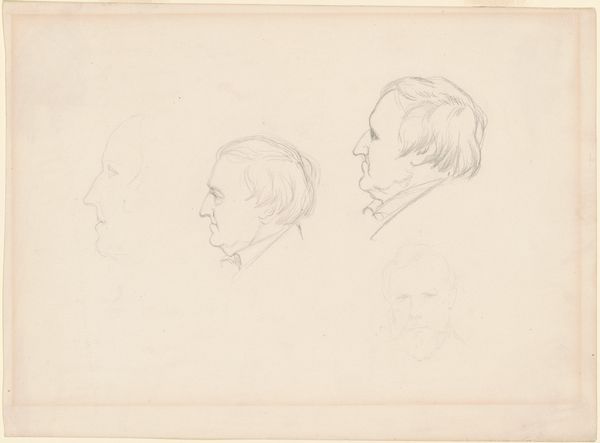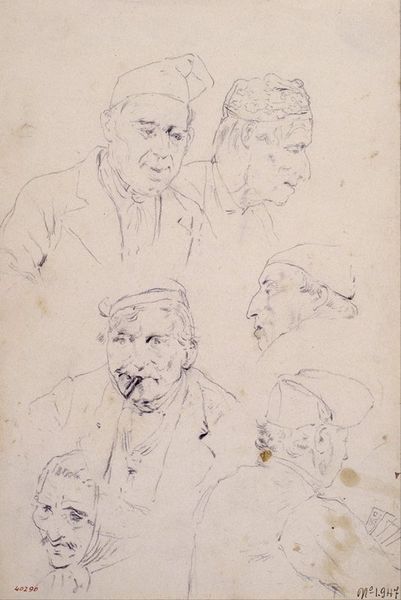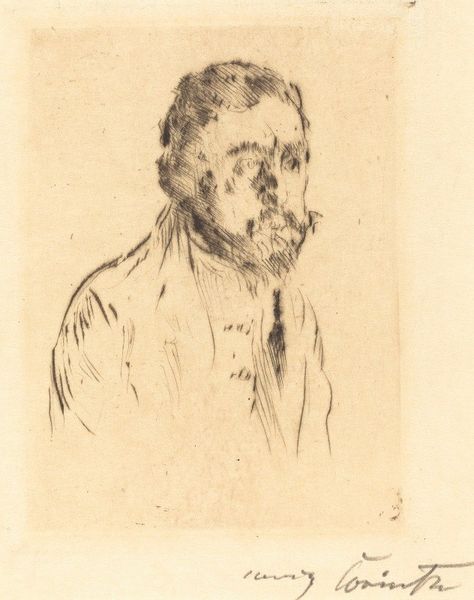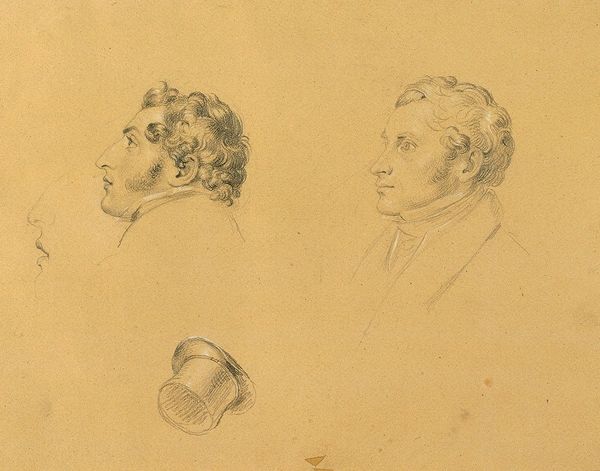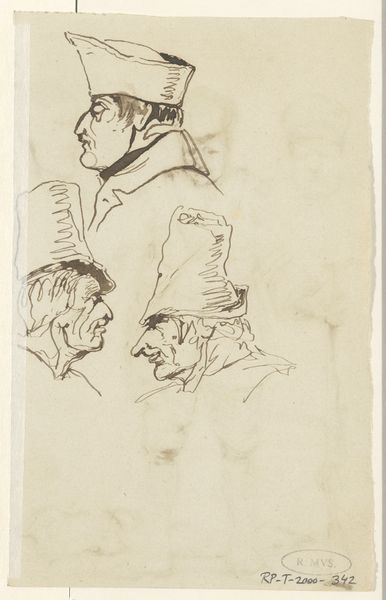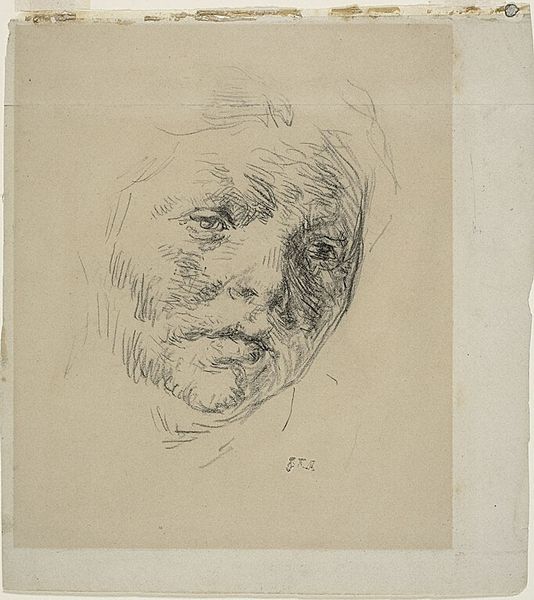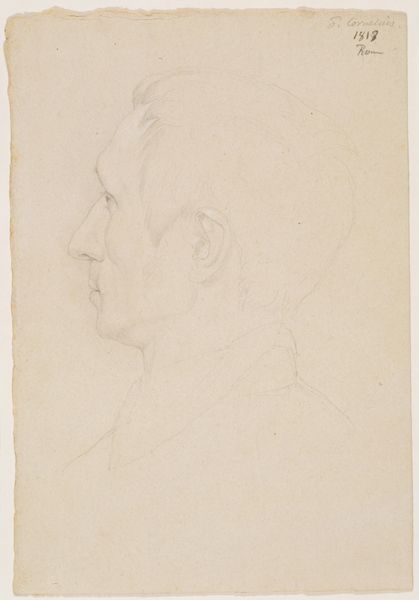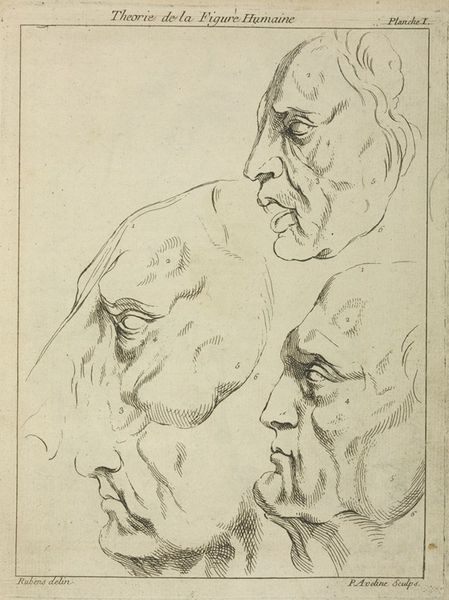
drawing, pencil
#
portrait
#
drawing
#
pencil
#
academic-art
Copyright: Public Domain: Artvee
Curator: This drawing by Eugène Delacroix is called Tête d’homme, or Head of a Man. We don’t have a specific date for it, but we know it’s a pencil drawing, showcasing the artist’s skill with line and form. What are your first thoughts? Editor: Intimate, somehow. Even though it's just a sketch, you can feel the weight of experience etched into these profiles. Two studies of the same face, perhaps? There’s a palpable sense of…resignation, maybe? Curator: The subtle hatching and the carefully considered placement of each line construct a persuasive portrait. The academic technique really highlights the bone structure. Notice how the artist used variations in pressure to achieve areas of shading, which models the face very realistically. Editor: And yet, look at the context! This is Delacroix, an artist who so passionately explored themes of revolution, orientalism, and colonialism. To see him apply such rigorous technique to a figure like this…it raises questions. Was this a study for a larger work? Or a commentary on the changing face of power in 19th century France? Curator: Without a firm date or further documentation, much of this remains open to interpretation. It’s an accomplished drawing, and the nuances in the rendering are remarkable. Look at the ear on the upper figure, its contours captured with such delicacy. That, for me, is the key to the artist’s skill. Editor: I see that—it’s technically brilliant. But it leaves me pondering the role of portraiture in cementing social hierarchies. How does depicting figures this way reinforce notions of authority, masculinity, and class? Perhaps that was part of Delacroix’s thinking too. Curator: I think we’re seeing his interest in form, rather than ideology. Still, your perspectives bring a new layer of inquiry to how we interpret Delacroix’s motivations. Editor: And the drawing itself encourages different angles to art appreciation—linking skill to context. Thank you!
Comments
No comments
Be the first to comment and join the conversation on the ultimate creative platform.
